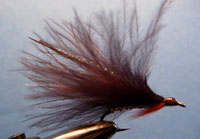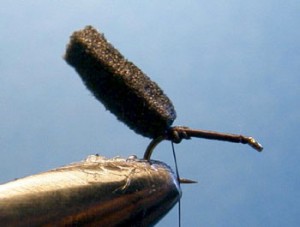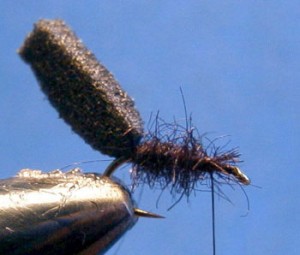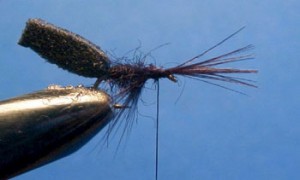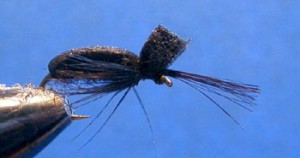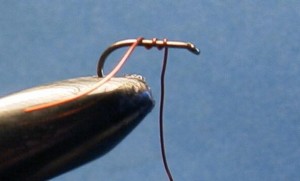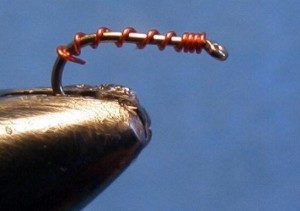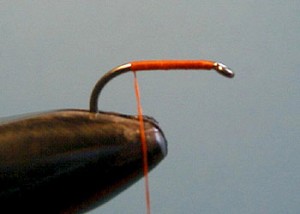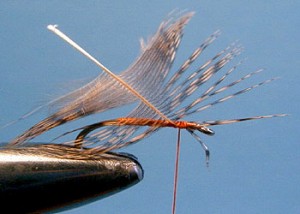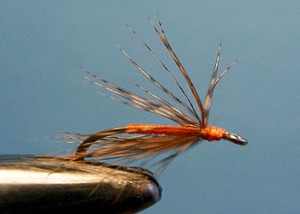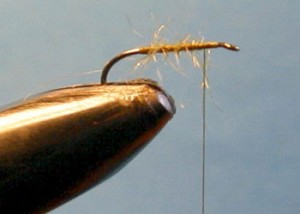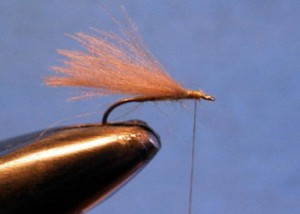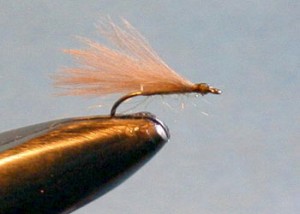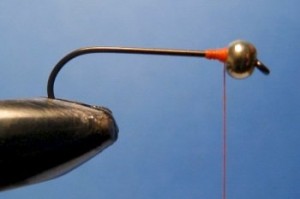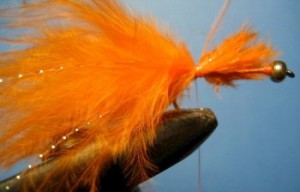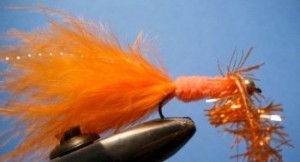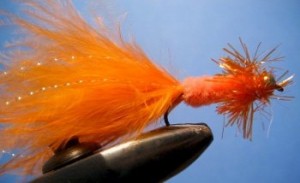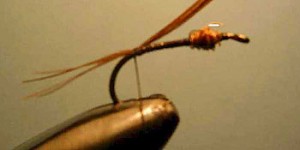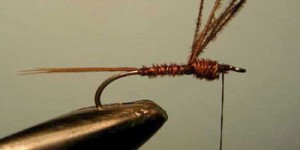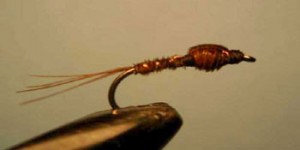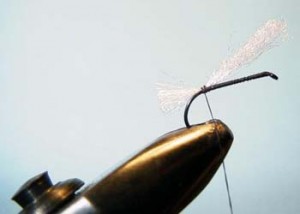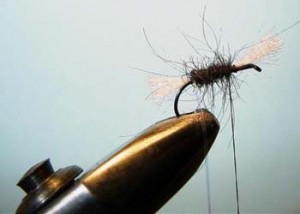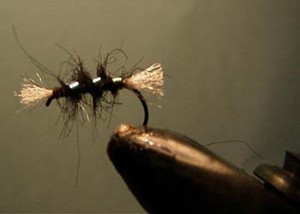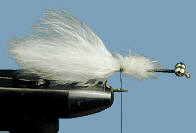FLOATING FRY

Tying:
| Hook | 12-6 longshank |
| Thread | Black |
| Body | Pearl mylar piping (packed) |
| Back | White ethafoam |
| Beard | Red cock hackle |
Fishing Method:
Floating line and long leader – usually June to October. This fry pattern is superb when trout are bashing fry and coming back for the stunned fish. Usually best fished static and allowed to drift on the wind. In Autumn it produces outstanding surface fishing on windy days (it can’t be too windy!) even on waters where there are no natural fry.
Fish often slash at the fly, presumably to stun it, and then come back and mop it up. At other times the take is a very confident sip – now you see it, now you don’t! Under these latter conditions a firm lift usually results in a well hooked fish.
Do not use a very light leader.











